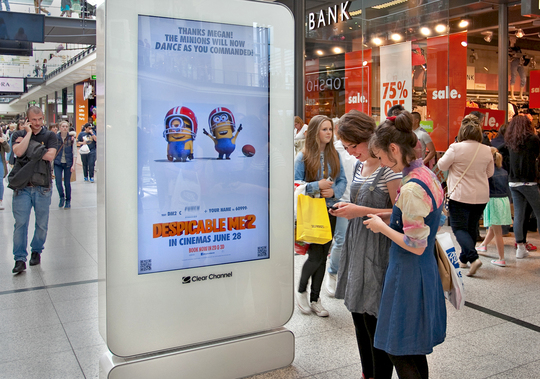3 Ways to Incorporate Mobile And Social Analytics In Your Ad Campaigns
In today's competitive business environment, most advertising agencies are using data analytics to hone their clients' campaign strategies and to improve their job of targeting, tracking, and engaging customers.
With mobile commerce growing at an annual rate of 42 percent, and with one-third of online shoppers making at least one purchase via smartphone over the last 12 months (and 20 percent via tablet), marketers that ignore mobile analytics are doing themselves a major disservice. The same goes for social, where tracking, measuring, and engaging consumers via sites like Facebook and Twitter is absolutely crucial.
As an agency that was in on the ground floor of both the mobile and social advertising movements, and that has been employing analytics to create accountable advertising for decades, we can clearly see that everything digital is moving in a mobile direction. In fact, with some campaigns, we're seeing as much as 70 percent of orders coming through digital platforms - and the majority of those are being made via mobile devices, even for large, international brands.
To get a better idea of how mobile and social campaigns are performing, consider using one or all three of these ways to leverage analytics:
1) To track consumer activity via their mobile devices. While mobile devices may appear to be "untethered" and therefore more difficult to track and measure, the reality is that it's quite easy to get a grasp on "m-commerce" activity. Not only can you track the direct sales that are coming in - and what devices are being used (phones, tablets, etc.) - but you can also tie that information back to specific consumers.
This will help you create more accountable and profitable advertising in the future, and it will allow you to harness those 70+ percent of orders that will soon be coming in via mobile devices (if they aren't already). One of the simplest tools available to you is Google Mobile App Analytics, which allows you to track and measure activity taking place on your app, establish and measure goals, determine conversion rates, keep track of campaign consistency, and apply the resultant data for actionable insights.
Having this information in hand, and then analyzing it for key points and patterns, will help you develop even more effective mobile campaigns in the future.
2) To parlay social activity into key campaign goals. What started out as a fun way for friends to keep in touch and share photos with one another has transformed into a powerful advertising and sales tools for organizations of all sizes.
Today, platforms like Facebook, Twitter, and Instagram are being folded into the campaigns of even the largest, most well known brands. And while tracking the performance of such efforts was elusive until recently, today's companies are keeping closer tabs on their social activity and using the information garnered to hone their campaigns.
"In 2015, there are now companies whose sole job is to sift through social data and find emerging clues and patterns. Facebook has a billion users, Twitter has hundreds of millions, and LinkedIn is the de facto professional networking site," writes Jonathan Hassell in CIO.
Remember that social allows you to track more than just "who is Tweeting about you" or "who is posting information about your firm on Facebook." It also helps you measure brand awareness, hone campaign goals, and determine the best possible approach for a specific marketer (brand awareness vs. direct sales vs. consumer engagement, and so forth).
3) To "listen" to your customers in new and innovative ways. There was a time when companies had to rely on "live" focus groups, written surveys, and customer feedback forms to find out exactly what their target customer groups were thinking. Today, most of that information is available online and a lot of it is at the marketer's fingertips (as in, the company doesn't have to ask for it).
"If your customers are talking about you, you want to hear what they're saying. If you're spending good money to talk at them, why not devote some percentage to listening to what they have to say?" writes Mikal E. Belicove in Entrepreneur. "Research shows that the conversations your customers have among themselves drive about 13 percent of business decisions and can amplify your advertising by 15 percent."
Becoming that "fly on the wall" is fairly simple. If you're running an engagement campaign, for example, look at whether customers are tweeting and/or re-tweeting information about their experiences with the product. If it's a direct sales campaign, then pay close attention to how those social interactions parlay into mobile and/or online sales.
In the end, the only way to determine the effectiveness of a campaign's mobile or social efforts is by taking a hard look at the data and then using that information to take action. While this step was easy to ignore just 5-10 years ago, agencies that don't take the time to effectively measure their mobile and social efforts are doing their clients a disservice and overlooking a large chunk of potential business.
This guest article was written by Jessica Hawthorne-Castro, CEO of Hawthorne Direct.


